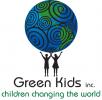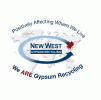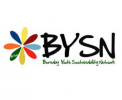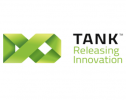Blog Post: SustainABILITY?
Sustainability at the Richmond Museum
Sustainability Television interns and staff visited the Richmond Museum on the opening day of the SustainABILITY? Exhibit on August 23, 2011. The Richmond Museum website introduces the exhibit by saying “Sustainability – it’s a topic we hear about everywhere we go, but what exactly does it mean? The latest exhibition of the Richmond Museum explores the realm of sustainability and provides visitors an opportunity to reflect on their ability to make sustainable choices”.[1]
I found the exhibit to be a great overview of a broad subject and touches on how the aspects of culture, environment, food, mobility, energy, and business tie in with sustainability. I interviewed Richmond Museum Curator Rebecca Forrest about the themes of the exhibit. She explained, “The focus is on social and cultural sustainability. We want to get people interested and trigger the idea that they can do more. We see sustainability as a philosophy.”
The exhibit makes efforts to broaden how people think about sustainability through questions rather than prescriptions. Visitors are asked to consider what makes a community sustainable and desirable to live in, and how we can improve it for future generations. With the spotlight on cultural sustainability, certain photos and artefacts were chosen to help connect people to Richmond’s sustainability history.
The artefacts range from washing machines to toilets and bicycles and highlight the progression of household technology from around 1870 onwards. They show the development and also the necessity of technology. Rebecca notes that “sustainability doesn’t mean going back to colonial times; it’s about finding a happy medium between technology and conservation. You have to think about what is sustainable for your life. For example, was it sustainable for women to spend their whole day doing household chores?” Choosing between time efficiency and resource efficiency is a common issue for those who want to be sustainable. I feel the exhibit shows us we can include sustainability in our lives in a personalized and realistic manner. The key is to find solutions that are better for the environment and better for the individual.
I also spoke with Nicole Aleong, a University of British Columbia student intern who worked on the exhibit from start to finish, about her thoughts and experiences. Nicole summarized the exhibit as “encouraging reflection on personal sustainability, and how we can improve what we’re doing. There are instances of looking to the past for answers such as in packaging where we’re going from plastics back to paper. Of course there has been modern progress as well.” Rebecca was surprised to learn that Richmond’s new waste management report showed we are able to recycle a much greater amount of waste in a few short years. As people demand sustainable solutions there is more investment in finding its way into these solutions and more choices becoming available.
Nicole’s area of work for the exhibit was mostly in graphic research, and she used the Richmond Archives as a main resource and extracted newspaper photos from the 1950s to 1970s. Nicole is especially proud of the Discovery Area, an interactive area for children that makes learning tangible through activity baskets. She shared thoughts about her own learning during the internship as well, “I learned about the deep thought process that goes into putting on an exhibit, for example how to draw visitors with subtle cues, usually colours and lighting. We also designed our mascot, Steve the Pacific Water Shrew, purposefully to make the exhibit more kid friendly ...”
I enjoyed the introspective thread of the exhibit and the personal connections it helps people make to sustainabile living. This exhibit runs until December 2011, and I encourage you to take a tour and explore how sustainability can fit into your life.
__________
Category:


































